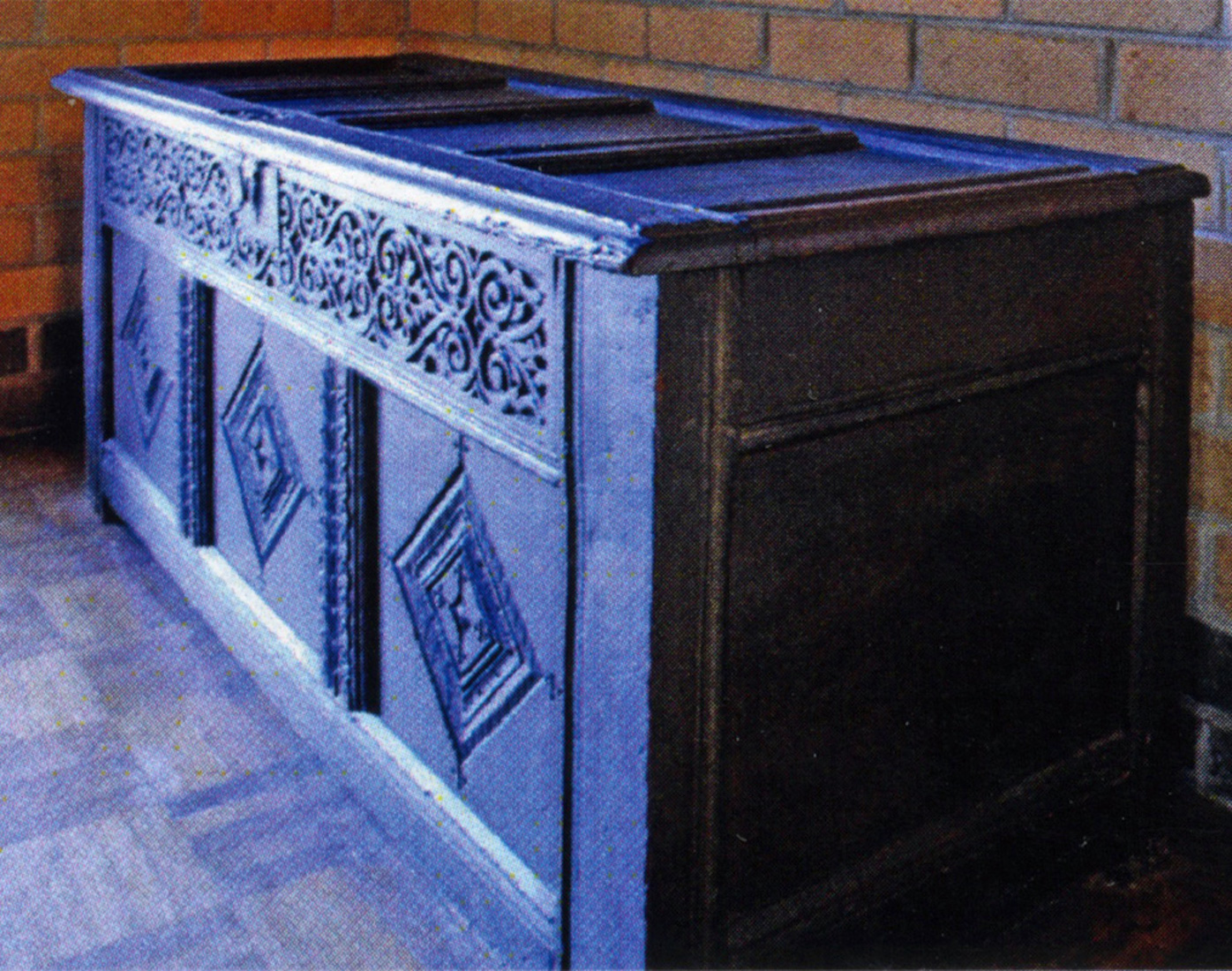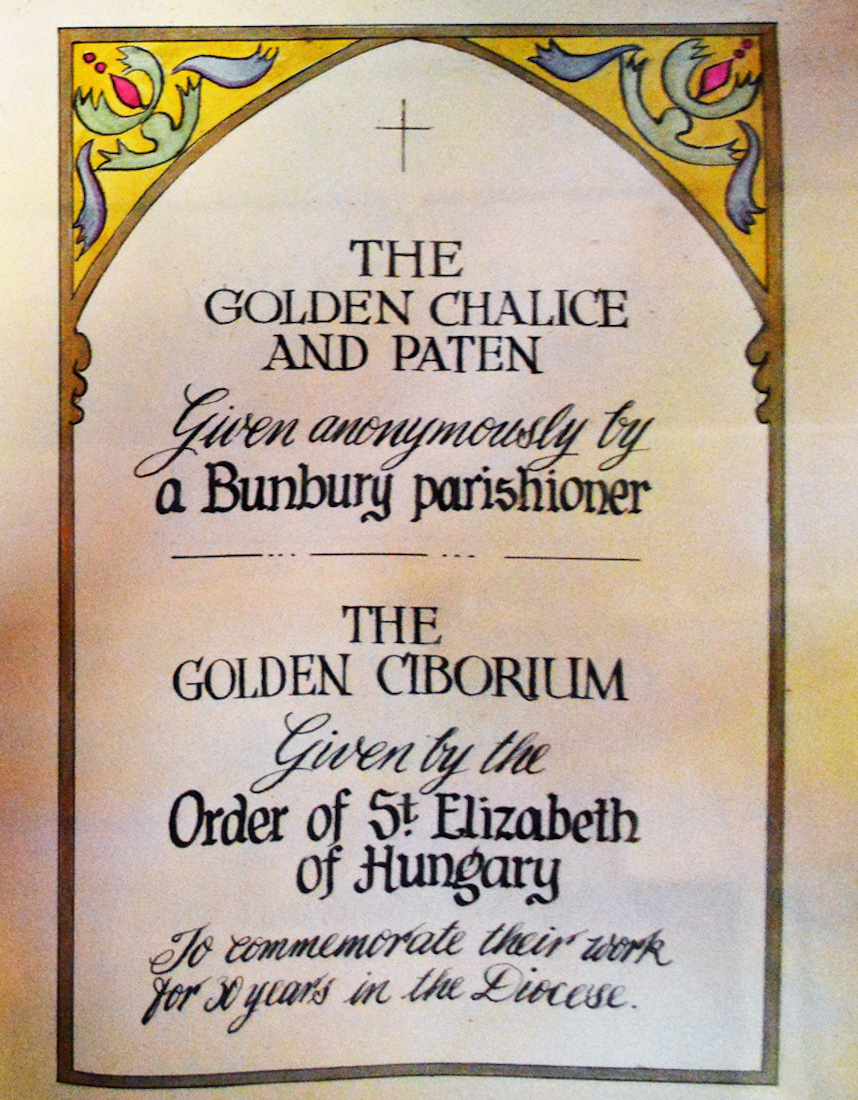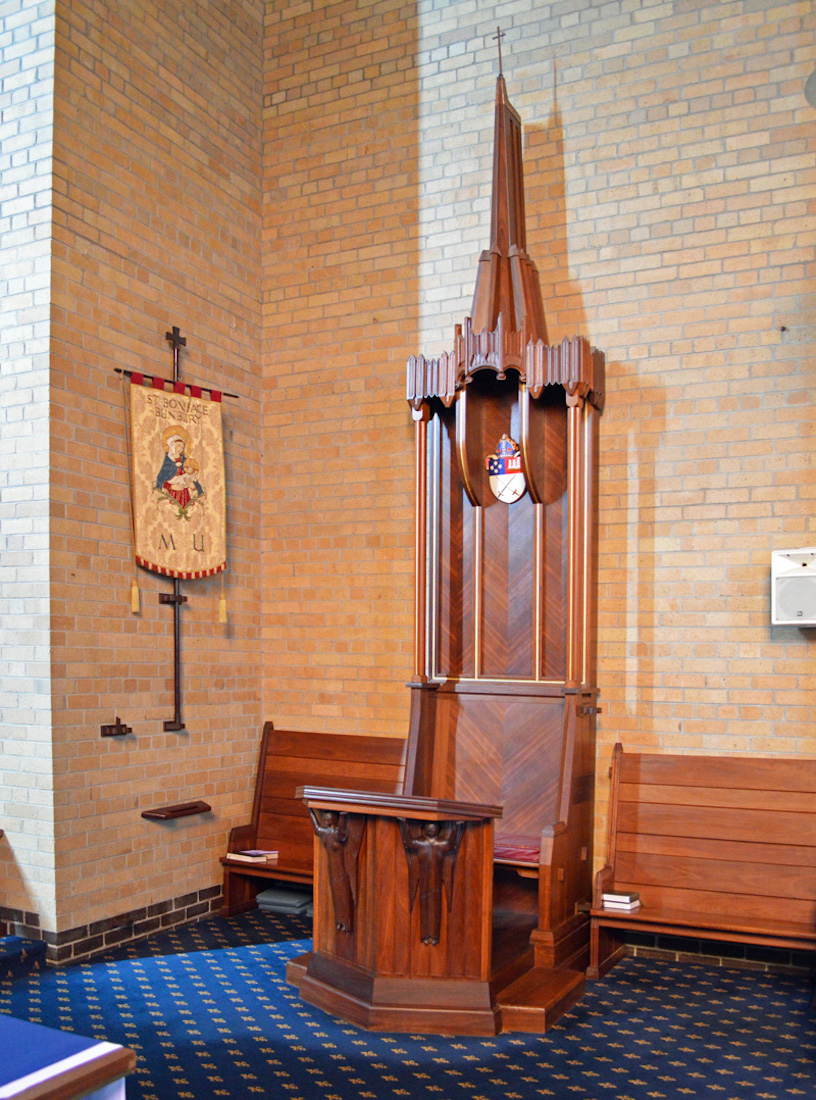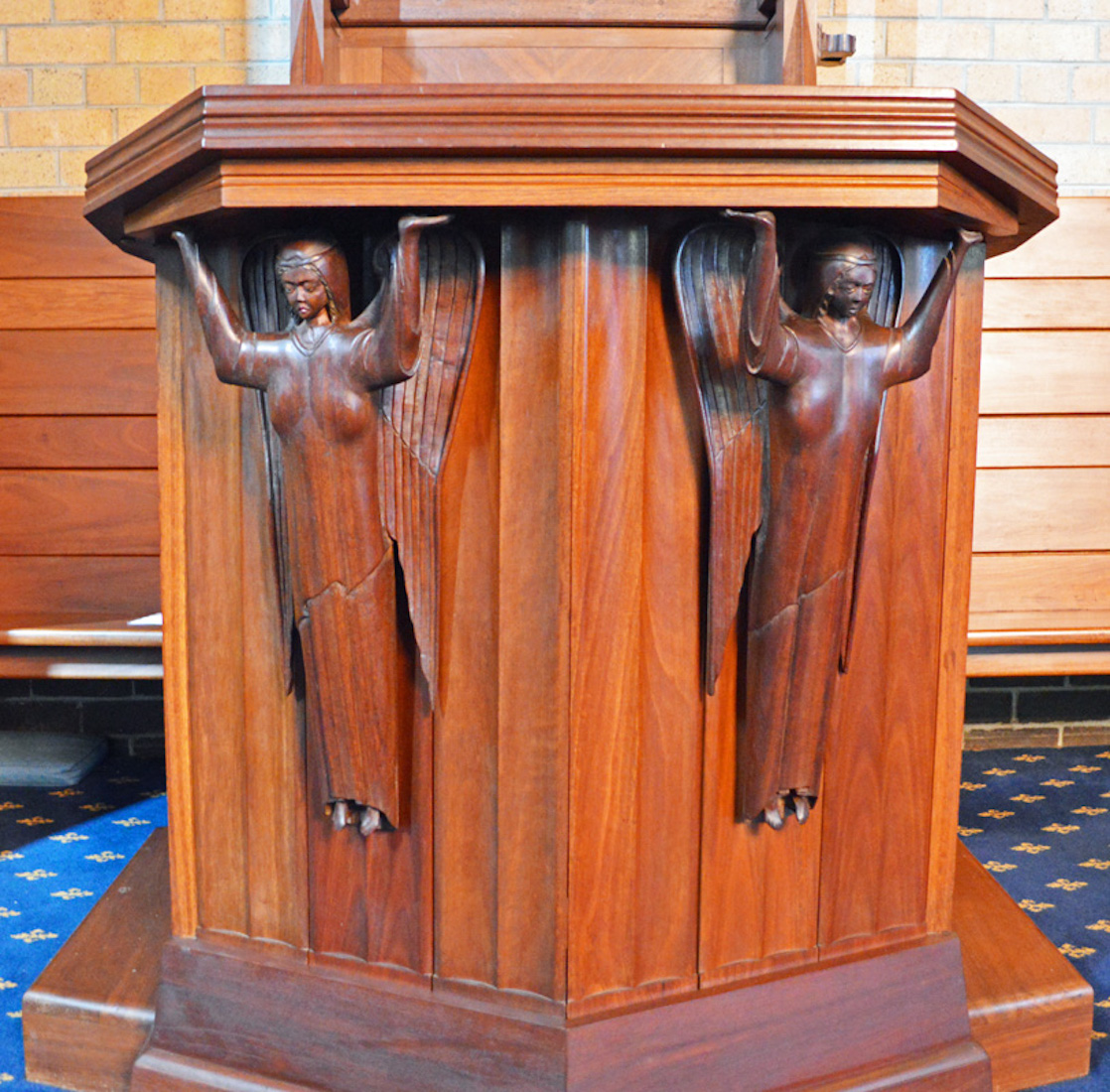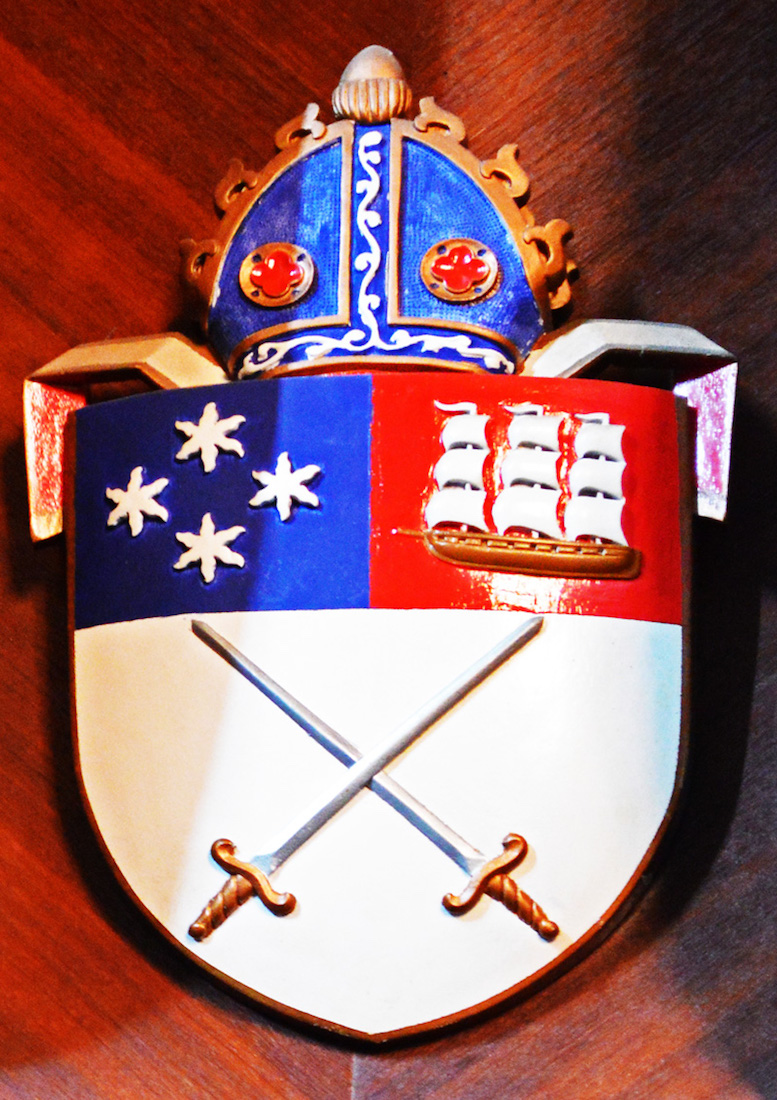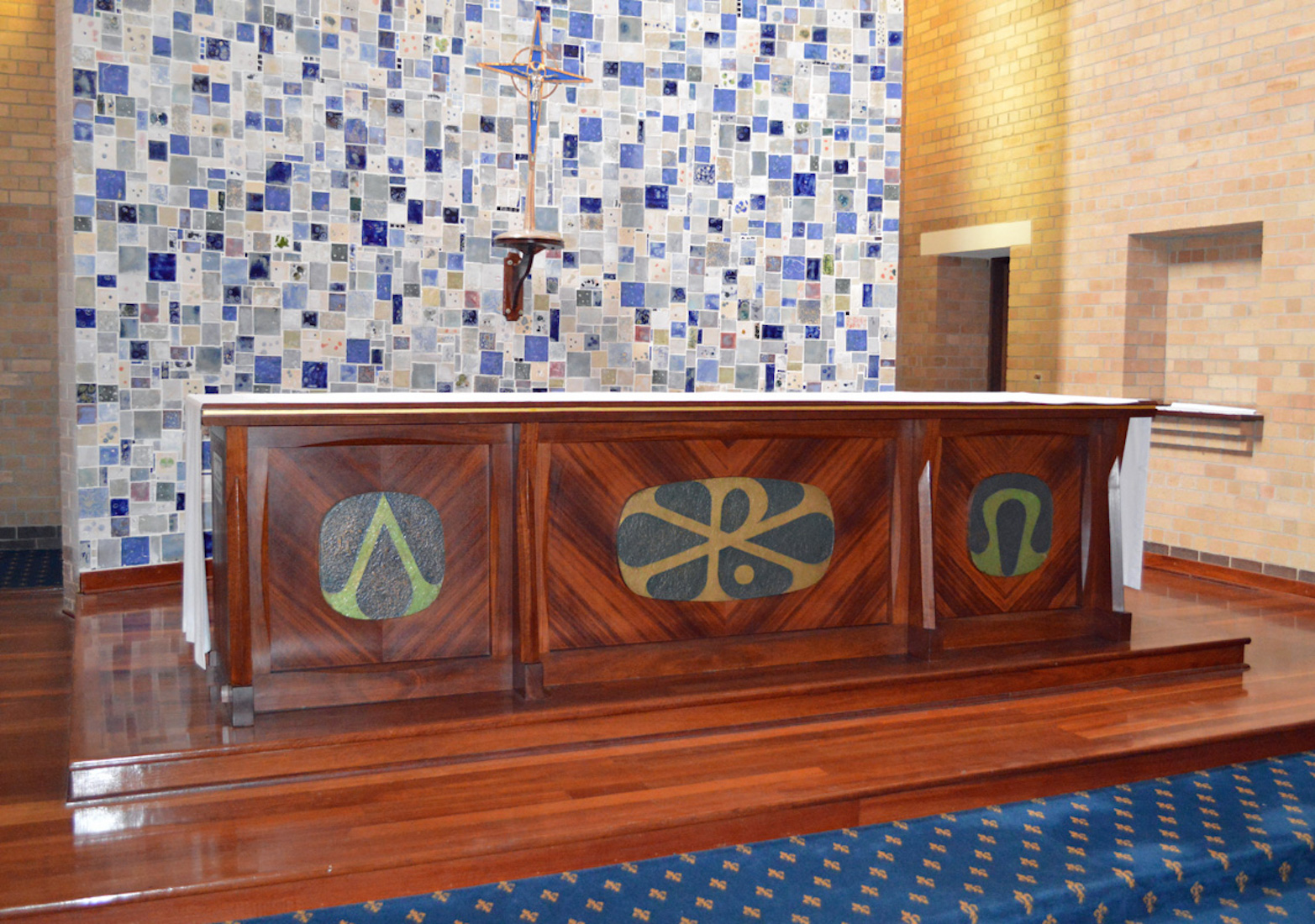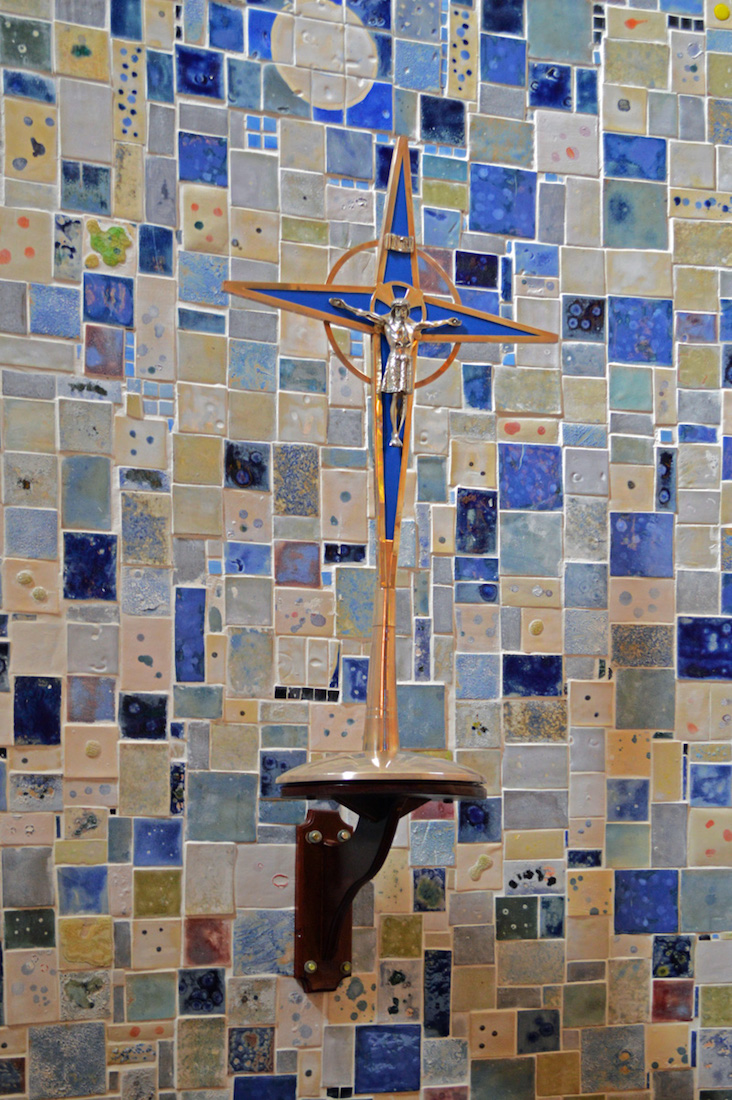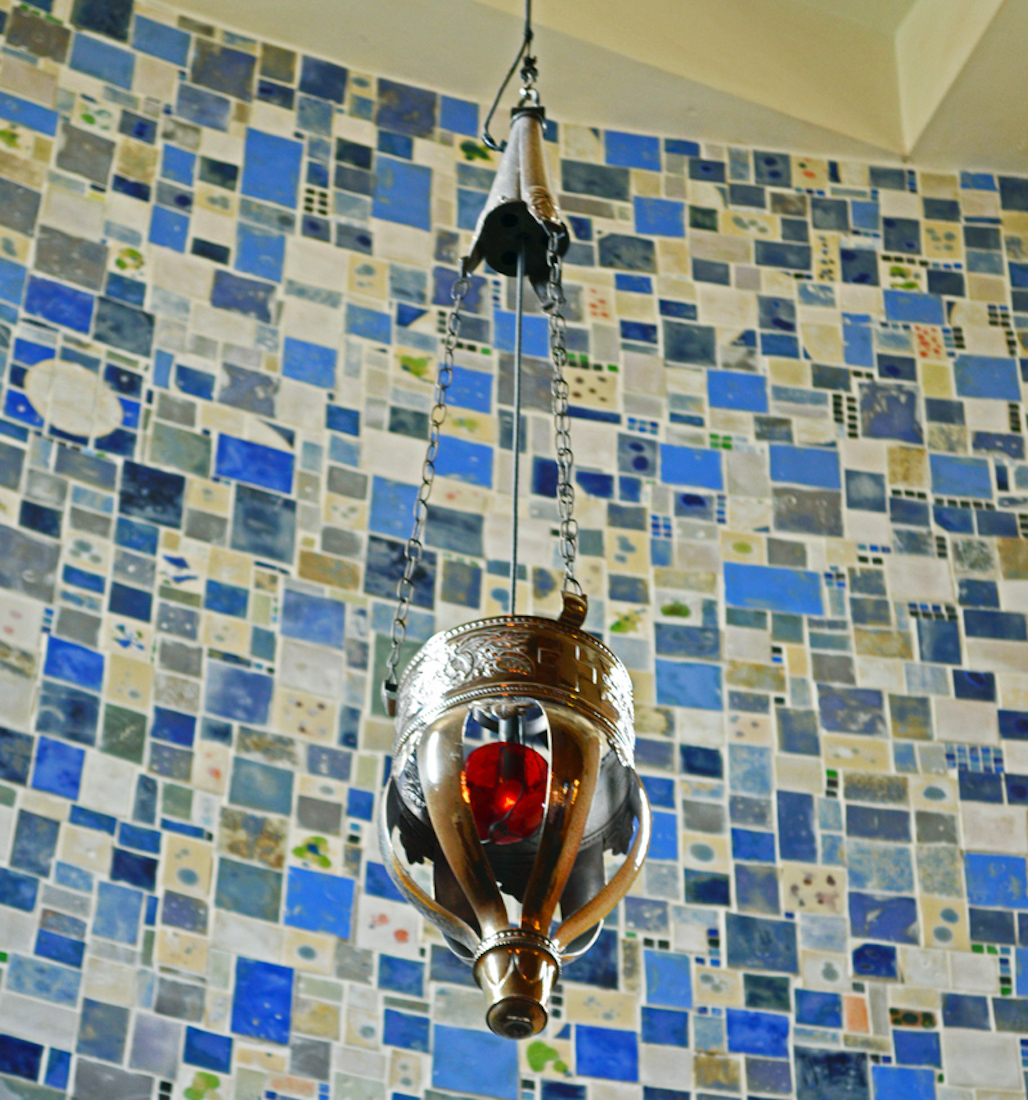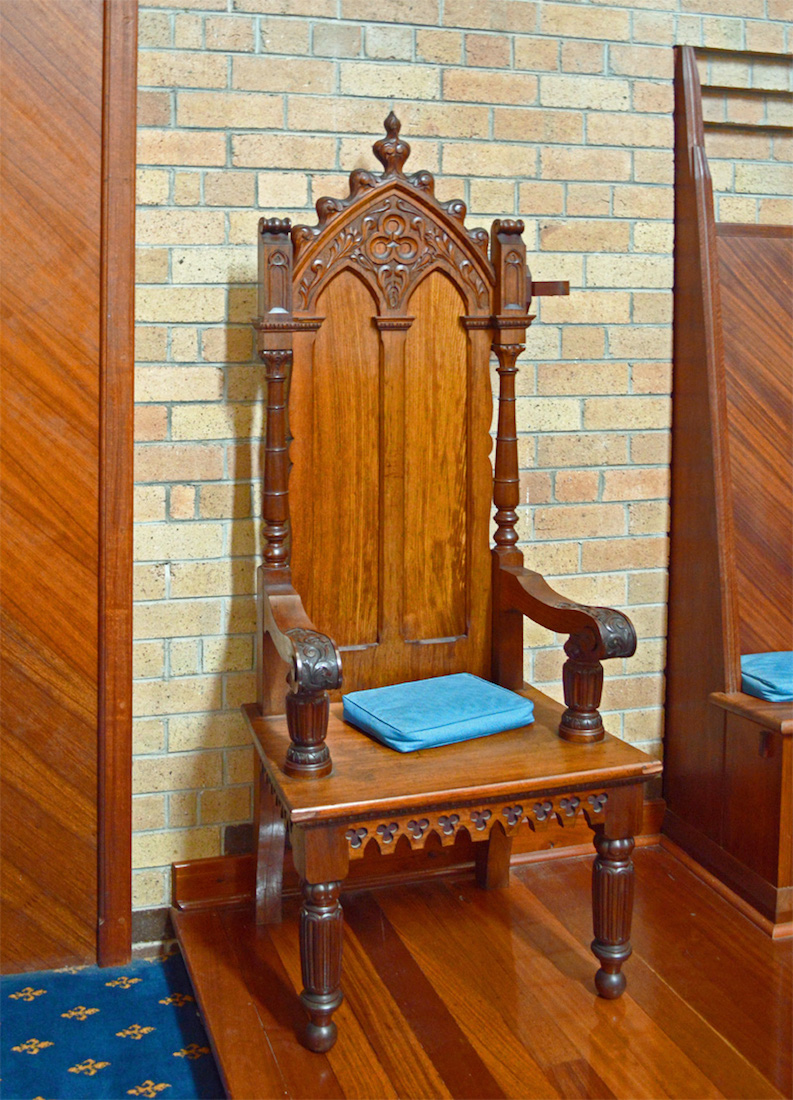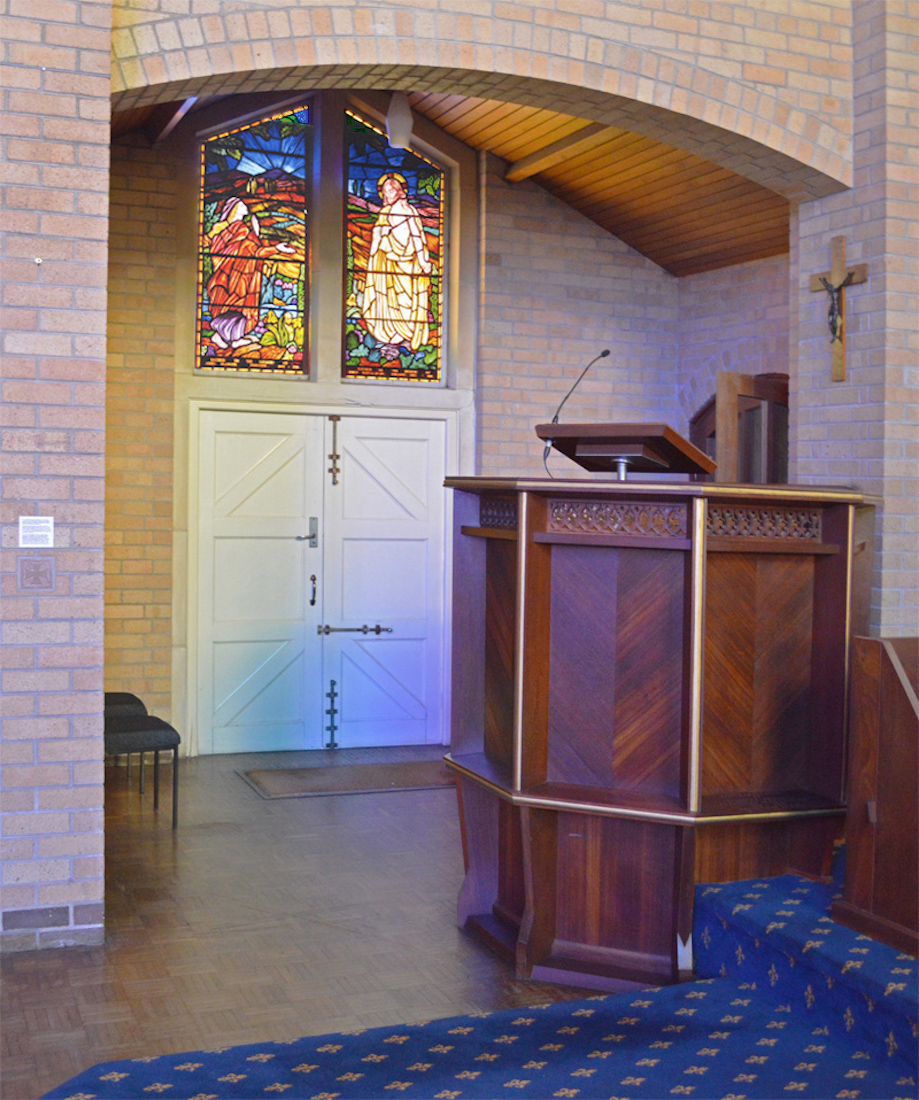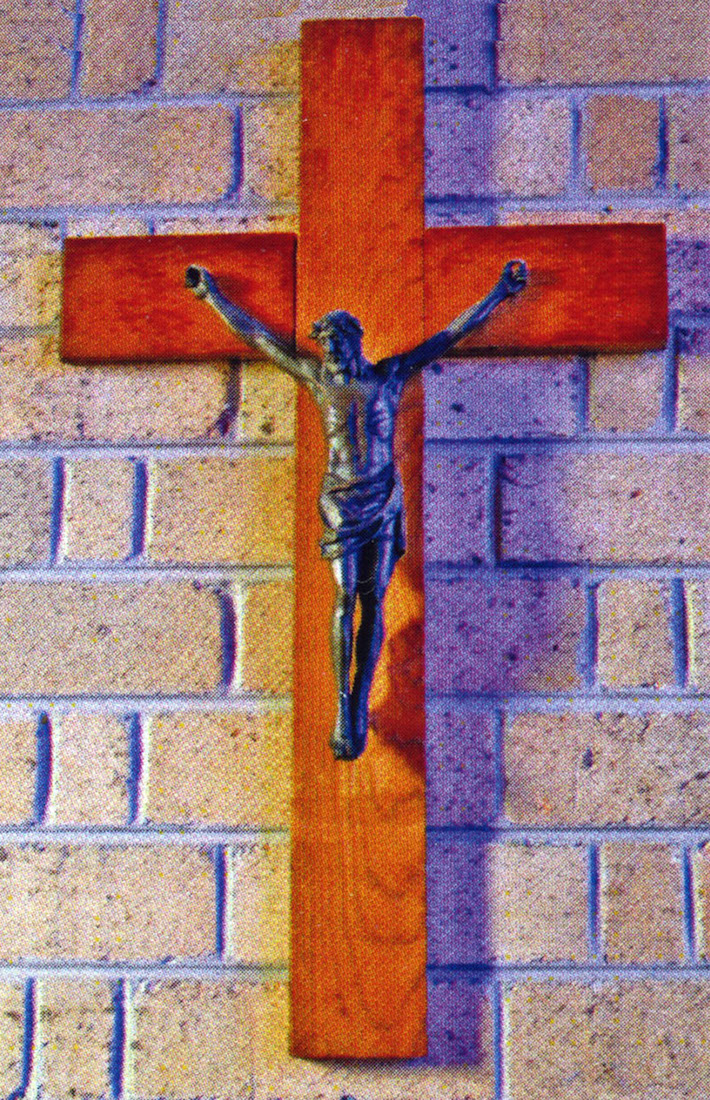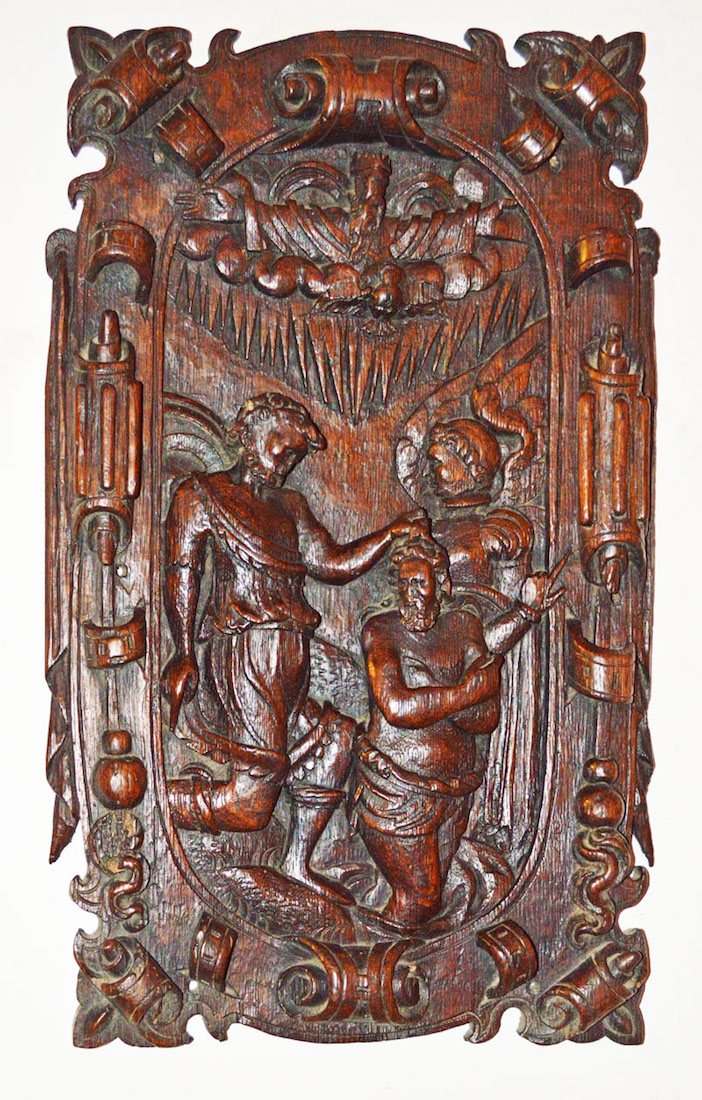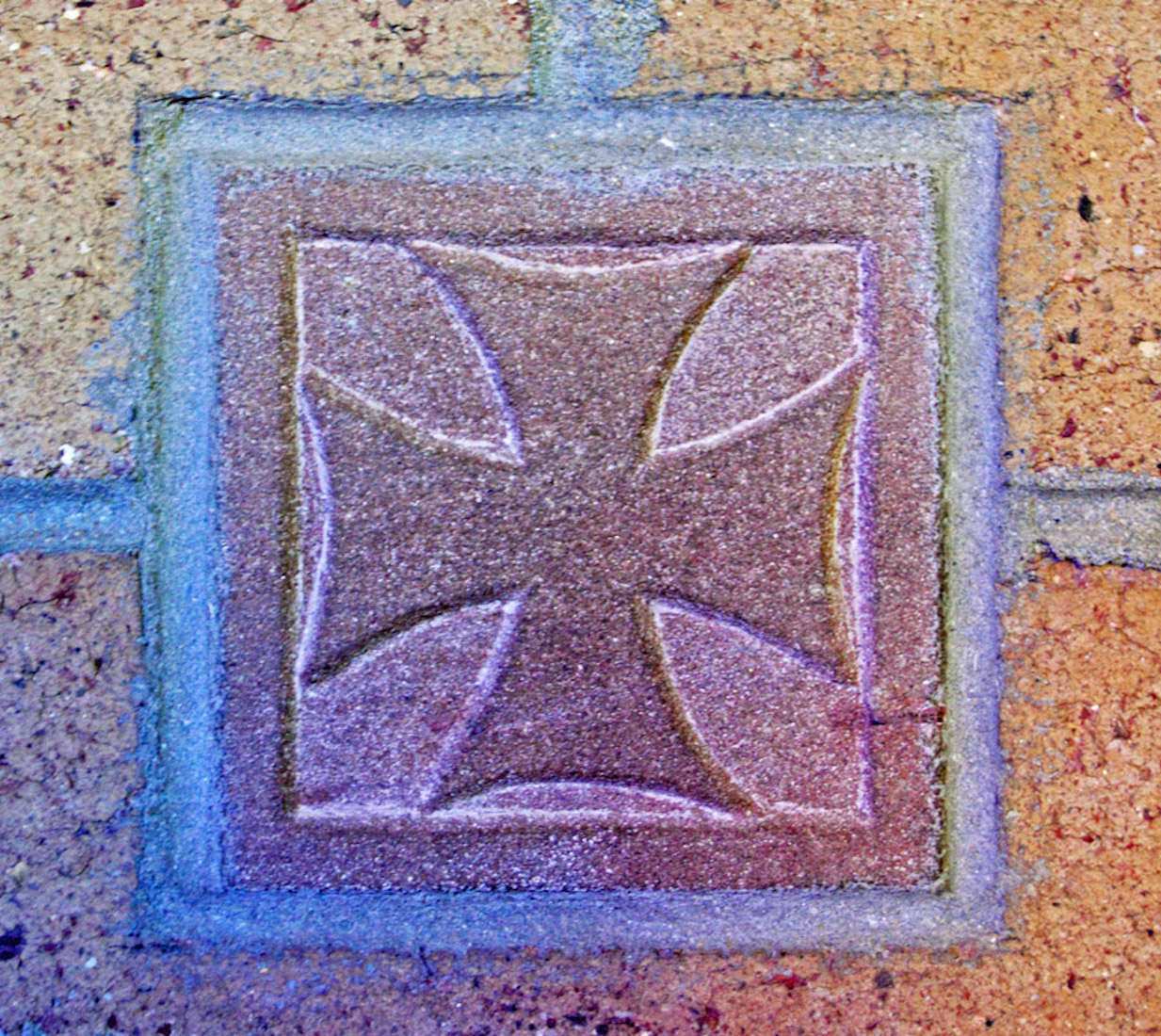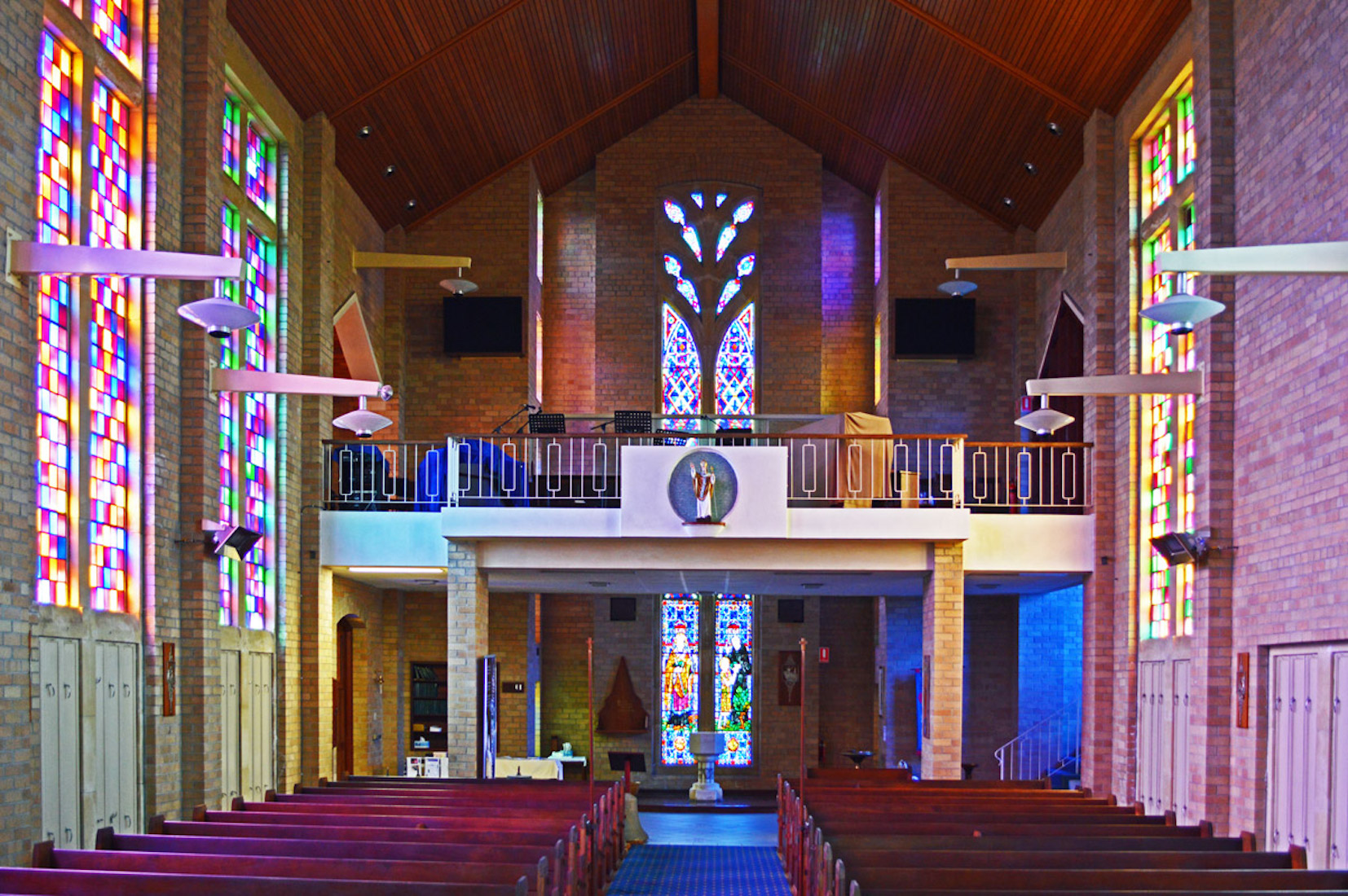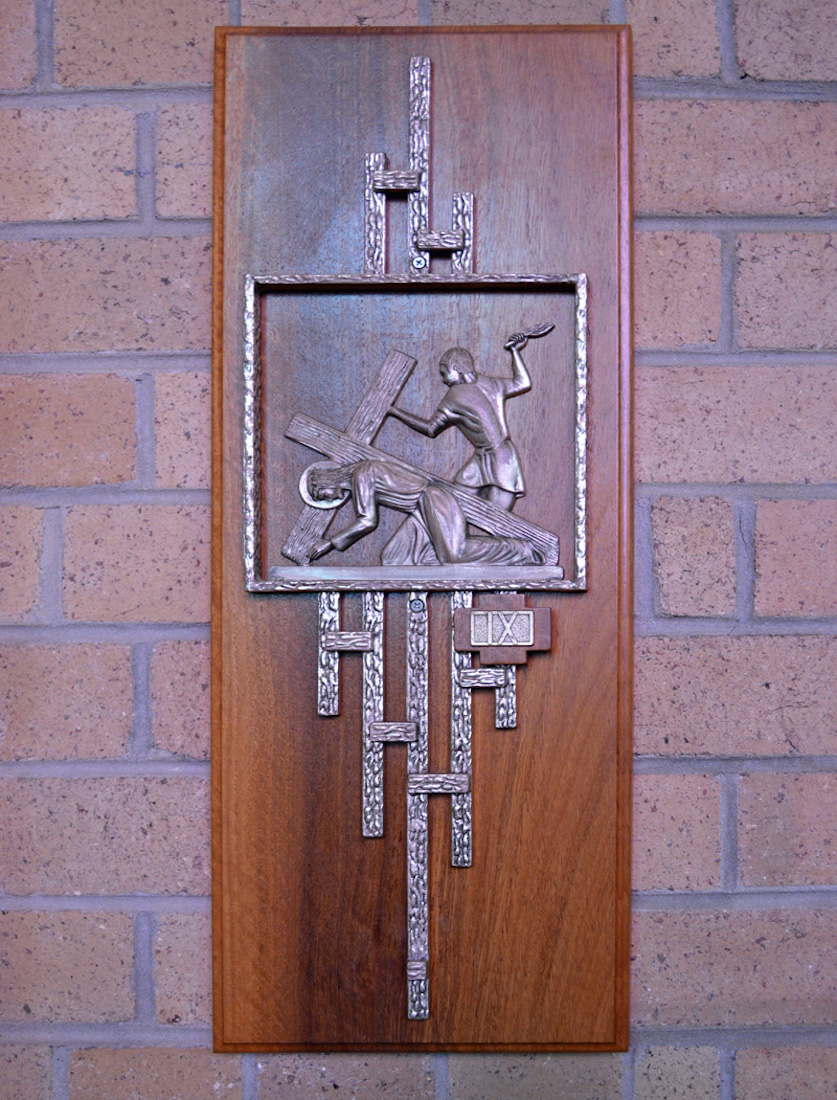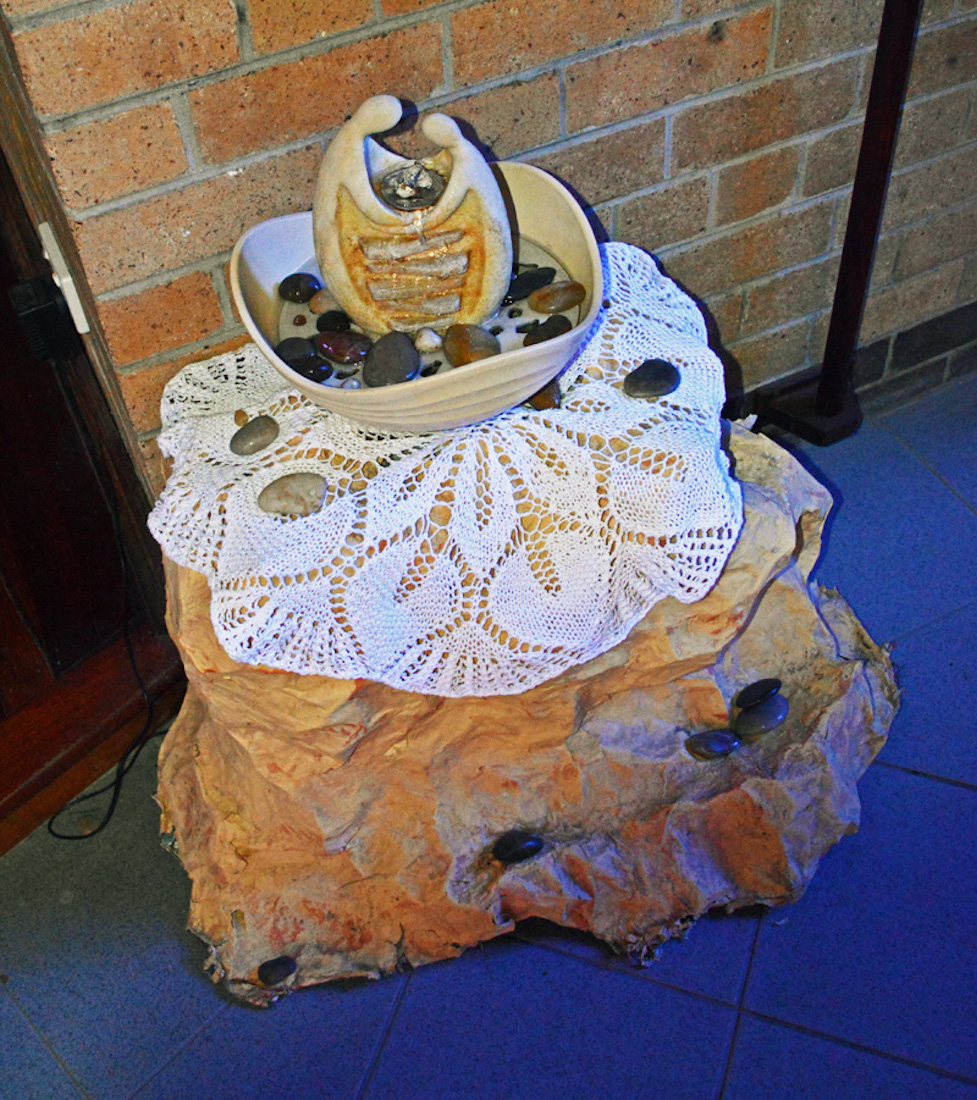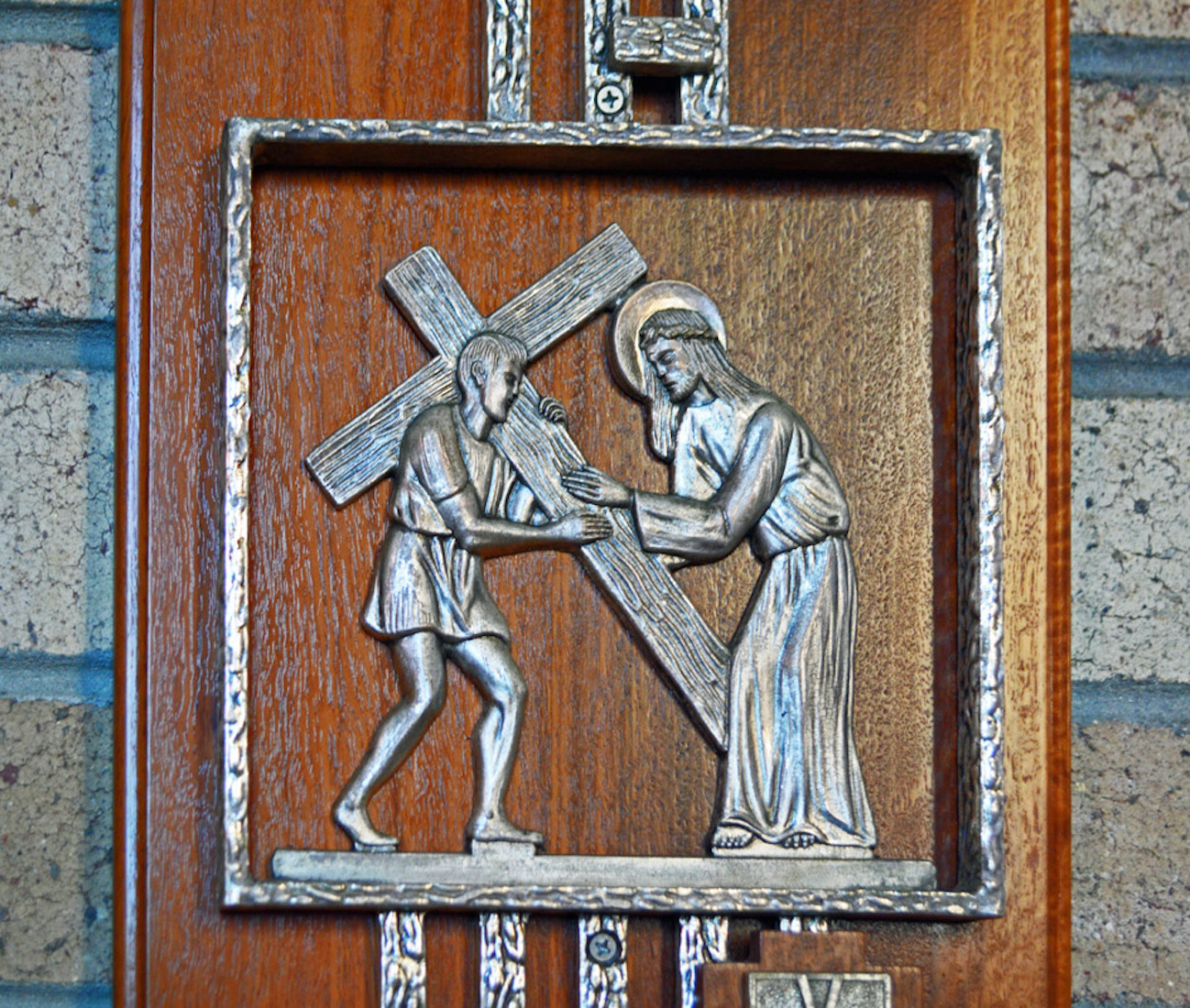
Station V of the stations of the Cross shows Simon of Cyrene being compelled to take up Christ’s Cross. There is profound symbolism here for the follower of Christ ... INDEX
22. PAINTING
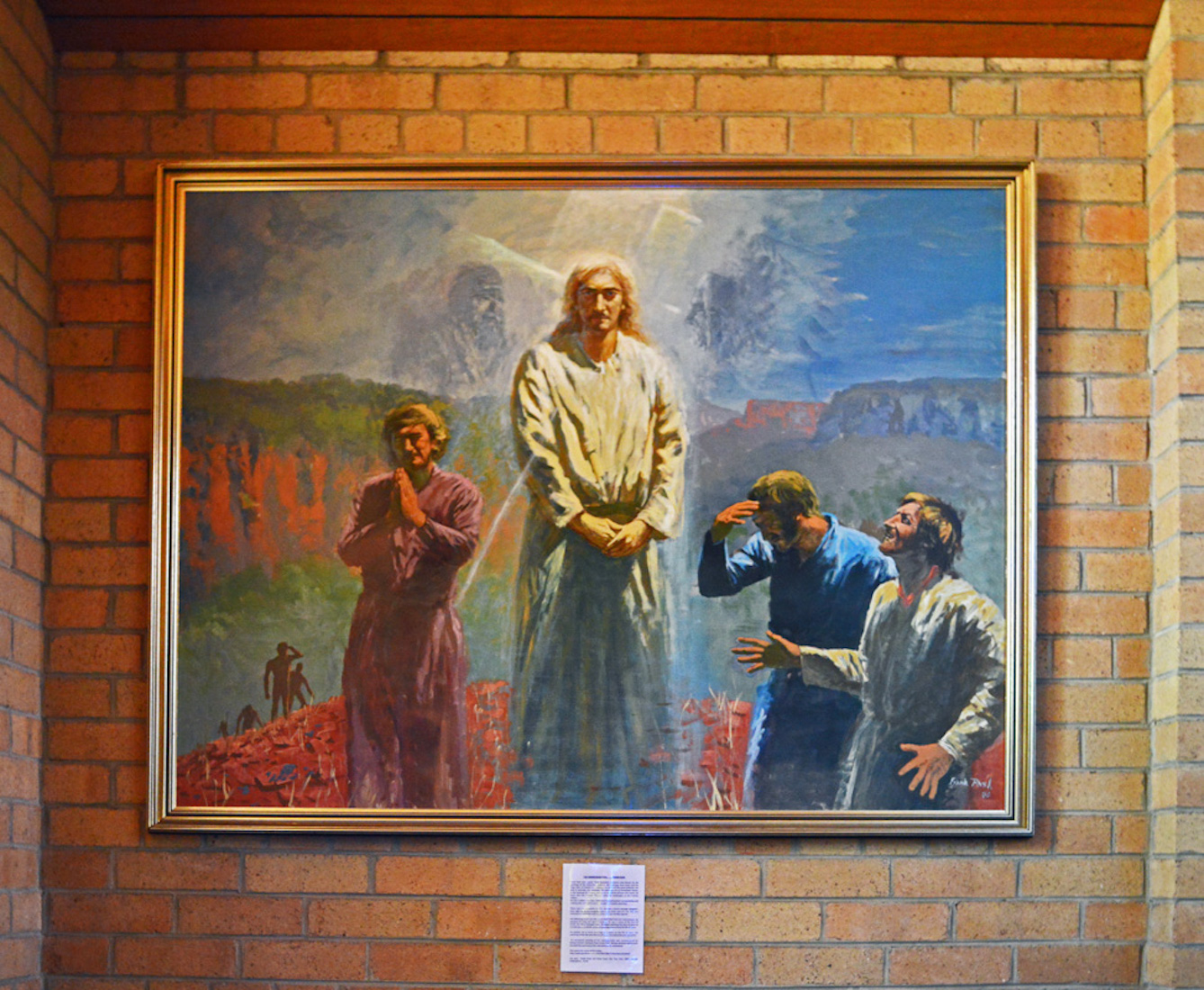
In the South transept is this painting of the Transfiguration by the famous West Australian artist Frank Pasch. Pasch was rather a wild man, dedicated to drinking beer and gambling. One day his teenage daughter was badly injured in a traffic accident. The following week he stopped drinking and began praying. He saw a vision of the face of Christ, and subsequently painted a series of 40 paintings of the life and ministry of Jesus. The painting of the Transfiguration was commissioned by Bishop Jamieson who generously donated it to the the cathedral on his retirement.
23. MUNIMENTS CHEST
Below the Transfiguration painting stands the Muniments Chest which is over 1000 years old. It was a gift of the late E. T. Moyes, of Bridgetown, formerly an Honorary Lay Canon of the Cathedral Chapter. Originally in Cleve Abbey, Devon UK, it passed at the time of the Dissolution of the Monasteries to the possession of Squire Woolcott, a farmer, who lived at Dulverton, not far from the Abbey. He was a Quaker and set sail for America in the Mayflower, leaving instructions that the chest should remain in the farmhouse. Mr John Moyes visited the farm, saw the chest and purchased it for his own Cathedral. [Photo credit: Cathedral photo]
24. OLD MANUSCRIPT
At the time of my visit, this manuscript of uncertain age, was displayed on top of the Muniments Chest. It is of historical interest because of its inscription relating to the Order of St Elizabeth of Hungary, and commemorating their work for 30 years in the Bunbury Diocese. The ‘Ciborium’ refers to the cup used for holding the Host in the Christian Eucharist.
25. CATHEDRA
We leave the South transept and move to the chancel, and up to the sanctuary – not so easily delineated in this Cathedral! Here we find on the South side, the cathedra, or Bishop’s throne. This was given in memory of Bishop Leslie Albert Knight, 3rd Bishop of Bunbury, 1938 – 1950. The throne was designed and executed through the expertise of Mr Louis Williams, architect of the Cathedral.
26. CATHEDRA DETAIL
The front rest of the cathedra is beautifully decorated with two carved angels.
27. COAT OF ARMS
At the top of the cathedra the Pauline Arms are displayed. These depict the Southern Cross, the S.S. Koombana (from which Koombana Bay takes its name) and the crossed swords of St Paul, the Patron Saint of the Diocese, symbolizing his martyrdom.
28. ALTAR
In the centre here we come to the high altar. Here the Holy Mysteries of the Eucharist are celebrated, and Christ comes to us in the mystery of bread and wine, which we share through Holy Communion. On the front of the high altar are the symbols Alpha, Omega and Chi Rho which tell us that Jesus Christ is the beginning and end of all our being. These symbols are traced on the floor of a church or cathedral during its consecration to signify that the building has been set apart from all profane use and is now completely a house of prayer and devotion. The Altar is sacred to the memory of Bishop Cecil Wilson, 2nd Bishop of Bunbury 1918 – 1937, who tried in vain to build a cathedral on this site.
29. REREDOS
The reredos wall was erected to replace the original golden drape, twice burnt by vandals. The work of English artist Louise Attley, it depicts the Southern Cross and the Transfiguration of Christ. Some comments by the artist can be found in the narthex of the Cathedral. I suspect many images can be found within this mosaic!
30. SILVER CRUCIFIX
Above the high altar sits the silver Crucifix, a focal point to remind worshippers of the Passion and Death of Our Lord as portrayed in the celebration of the Eucharist.
31. SANCTUARY LAMP
High above the altar hangs the sanctuary lamp which once graced the Pro Cathedral sanctuary. It is the work of one of Western Australia’s early silversmiths, Gordon Holdsworth of Bridgetown, and is a memorial to Archdeacon and Mrs Adams. (Archdeacon Adams was Priest at St Paul‘s Pro Cathedral.)
32. DEAN’S CHAIR
To the left of the altar stands the original cathedra of St Paul’s Pro Cathedral. It is now used as a portable throne for diocesan ceremonial purposes.
33. PULPIT
On the North side of the chancel stands the pulpit, sacred to the memory of Bishop Frederick Goldsmith, founding Bishop of Bunbury 1904 – 1917. From here the Word of God is preached. Behind is an exit door, above which is the beautiful Resurrection Window, a memorial to Edith Donaldson, organist at St Boniface, and to Anne Blanc Ferguson. It was made by Gowers and Brown, who were responsible for all the glass throughout the Cathedral. East of this window is the entrance to the Chapel of Saints David and Paul: we shall return here shortly.
34. PULPIT CRUCIFIX
Over the pulpit can be seen a Crucifix taken from the Parish Church of St David in South Bunbury. This is a reminder that ‘Anglicans Preach the Faith of Christ Crucified’.
35. CARVING
Nearby is the Branscombe carving. This carving, from the parish church in Branscombe, Devon, was given by the parish to the Cathedral in 1966 to commemorate the appointment of the Ven. W. E. Henn as an Honorary Canon of that parish.
36. CONSECRATION STONE
Set into the South transept pillar is the consecration stone from the Mother Church, Christ’s Church in Canterbury, England.
37. WEST VIEW
Standing in the body of the nave and looking back towards the West wall, we see the Cathedral bathed in coloured light from the squared windows. St Boniface looks back at us from his central position on the balcony. In the Great West Window, the Tree of Life sprouts up from the Font.
38. STATION IX
As we walk back along the North wall, we can meditate on the stations of the Cross. Here at station IX, Jesus falls for the third time.
39. ICON
Returning to the narthex we find the icon of Christ, written on seasoned jarrah, and specially commissioned for St Boniface Cathedral for the 50th Anniversary Celebration. The prototype for this image was adapted from the icon, noli me tangere, where Christ appears to Mary Magdalene after He has risen from the tomb. It is based on St John’s Revelation with Christ standing amidst seven golden lamp stands with brazen feet, holding seven stars in his hand, and a double edged sword coming from his mouth. The iconographer has included a celestial globe containing the five stars of the Southern Cross. Christ holds a scroll: His message for us.
40. PEBBLE POOL
Also in the narthex stands a pebble pool. Those coming to the Cathedral are invited to place a pebble in the pool as a prayer for someone in need. Once a week the pebbles are removed and taken to the Holy Communion Table, where a special prayer is said.


